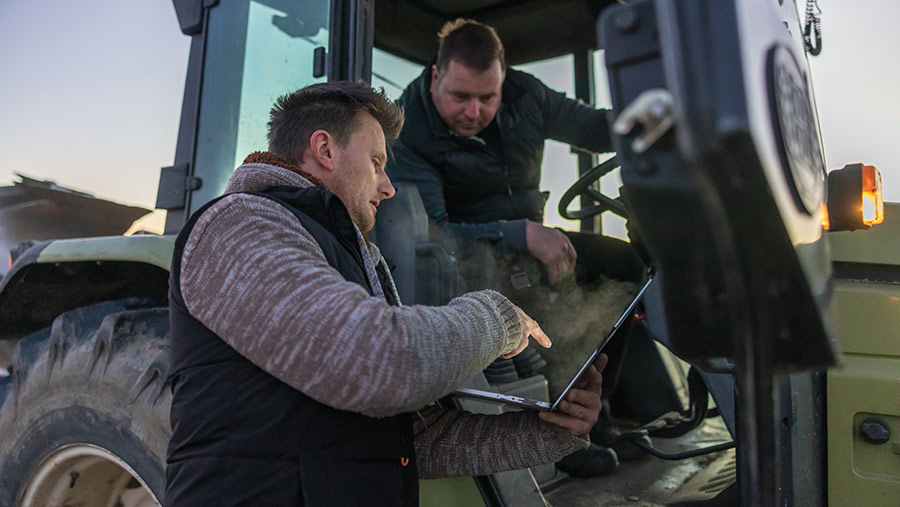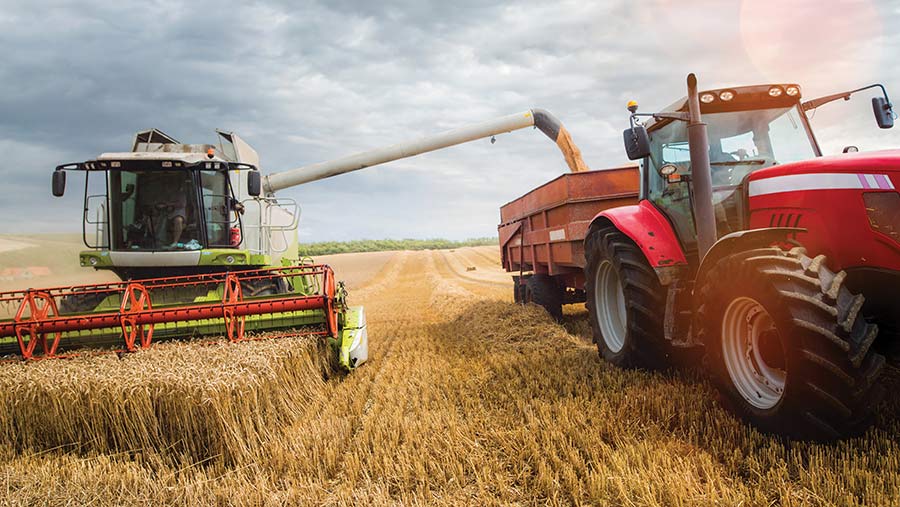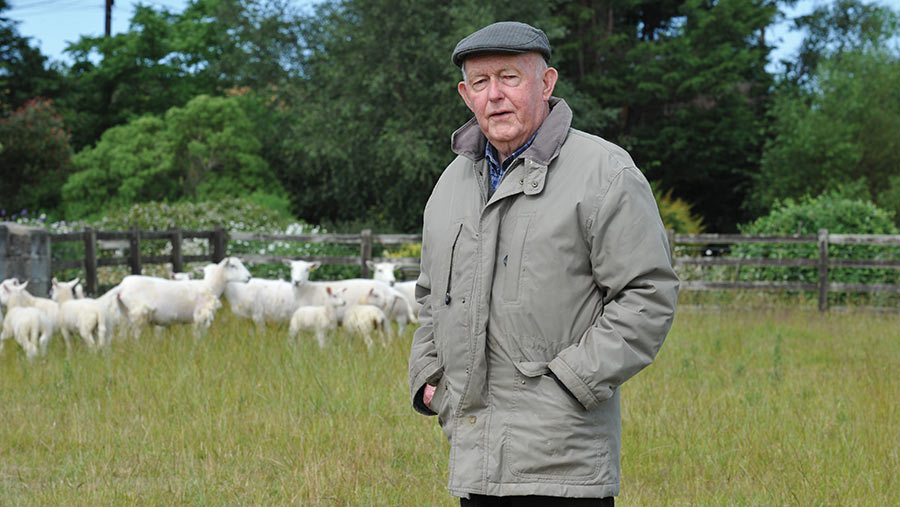Ways farmers can collaborate to tackle costs and low prices
 © iStockphoto.com/SimonSka
© iStockphoto.com/SimonSka An unfair characterisation or otherwise, farmers historically have had a reputation for being reluctant to co-operate with each other, often lagging behind other industries when it comes to working together.
Largely driven by economics, collaboration is now gaining traction within agriculture.
Farmers are finding new and different ways of working with their peers and buyers to ease some of the financial pressure they are under from higher input costs and price stagnation.
At a seminar at the 2023 Royal Welsh Show, HSBC deputy head of agriculture Euryn Jones advised farmers that collaborative ways of working could be the way forward for many of them and that doing so could make a positive difference to their businesses.
In an interview with Farmers Weekly, he expands on that theme.
“The benefits are multiple,’’ he says.
“In my experience, farmers who collaborate effectively with others, whether that be with other individual farmers or organisations in the supply chain or elsewhere, often become more efficient and successful.’’
See also: Farm collaboration: Examples and tips for success
Benchmarking
In its more basic form, Mr Jones says collaboration can mean something as simple as benchmarking.
This system allows farmers to gain a more accurate picture of how much room there is for improvement on their own farms by comparing the results achieved in their own businesses with what other producers are attaining on similar farms.
“Being challenged by peers is such a powerful way to improve business efficiency, a simple comparison with one’s own peers enables farmers to understand how their inputs and outputs compare,’’ says Mr Jones.
“I can think of very few other actions a farmer can take that will provide more benefit than benchmarking and having that support and challenge from their peers. Benchmarking is a good thing, however they do it.’’
The dairy industry, he suggested, led the field on this with a number of well-established grazing discussion groups operating in the UK.
“I have seen so many farmers benefit from this model, gaining an outside perspective on their business from people they genuinely respect,’’ he says.
Industry bodies, including AHDB and, in Wales, Hybu Cig Cymru (HCC), generate and publish performance data and that can be a very useful means of benchmarking, says Mr Jones, but he believed it was even more powerful to have face-to-face interaction with peers and in confidence.
Buying groups
Buying groups bring farmers into a conglomerate to help them secure a better deal on inputs, perhaps a discounted price or better payment terms than they would get as individuals.
Mr Jones says this arrangement can add considerable power when negotiating deals, often on feed, fertiliser and fuel.
“The factors being negotiated don’t have to be based purely on price, they can include a range of other elements that provide buyers with the best value,’’ he explained.
This arrangement can also allow haulage costs to be optimised, with significant potential savings on full loads, particularly for deliveries to remote locations, since it allows hauliers to operate their fleet more efficiently. As a result, they can offer more competitive prices.
Joint ownership of machinery and equipment

© iStockphoto.com/Debove Sophie
When considering how to fund machinery, joint ownership or sharing with a neighbour can be an economical option, particularly when it involves high-value kit.
This arrangement has been relatively commonplace in the arable sector for many years, but more dairy and livestock farmers are now recognising the benefits too.
“Many farmers use contractors and that often works well, but in some cases sharing with several neighbours can be a sensible alternative,’’ says Mr Jones.
“There are also examples where family businesses have split, but they see the merit in sharing machinery rather than doubling up.’’
Differences in farm scale can be ironed out at the purchase stage and with ongoing costs.
In the case of a combine harvester, for example, outlay could be weighted according to acreage farmed, applying that to maintenance and repair too, and with the diesel tank topped up before it leaves each farm.
To overcome tensions that can come with every farm needing to use the machine at similar times, it is a model that can work better for farms growing different crops, or those with different systems.
“I know of an example of four dairy farmers who jointly purchased a forage wagon – two use it to feed in the morning, two in the afternoon,’’ says Mr Jones.
This arrangement can have additional benefits too, he has observed.
“One of those farmers suffered a health problem and was really struggling, but the other three farmers were able to step in to help,” he says.
“A situation like that can give additional resilience to all those businesses.’’
Pooling resources within a joint venture can produce considerable benefits
Agricultural consultant Jamie Gwatkin calculates that savings in labour and machinery costs of £100/ha are achievable by pooling resources in combinable crop regimes and up to £170/ha where root crops are involved.
In a climate of high interest rates, merging resources also allows for capital release from machinery, which means debt can be reduced, says Mr Gwatkin.
Other benefits he has identified include:
- Improved machinery specification leading to higher outputs and greater efficiency, with more crop harvested in ideal conditions during a catchy harvest
- Increased management capability to progress new ideas
- Greater financial control and discipline, with more opportunities to analyse costs and make management decisions based on facts
- Management cover during holidays, illness, or other absence
- Expansion opportunities
- Greater purchasing power
Collaboration in the supply chain
As evidenced by some of the past crises caused by price volatility in different farming sectors, businesses with contracts aligned to their cost of production more or less sailed through, while others floundered.
These models remove much of the risk for farmers, allowing severe price troughs to be avoided.
Producers must accept they might feel disadvantaged when there are price peaks, but Mr Jones believes overall they work in a supplier’s favour.
“Having some indication of what the price is going to be, even if just a band within which the price will be fixed, will avoid the severe troughs and is worth the loss of those peaks when they do arrive,” he says.
He cites the example of the potato sector, where prices were historically extremely volatile, but are less so now since cost of production contracts have become more commonplace.
In the financial supply chain, borrowing money at a fixed interest rate is a form of collaboration, says Mr Jones.
“When a fixed rate is agreed with a lender, it is not necessarily about borrowing at a lower rate but at a known rate.
“The key is to avoid high interest rates and if a borrower does miss out on low interest rates when they occur it might be a price worth paying.’’
This outlook can also apply to utility contracts, such as energy.
Case study: Agrisgôp

Huw Thomas collaborated with other farmers to progress the New Zealand Polled Wiltshire breeding programme © Farming Connect
Collaboration has allowed a group of Welsh farmers to introduce new genetics into their flocks.
The farmers – Huw Thomas, John and Hedd Davies and Dafydd Evans – all run flocks of EasyCare sheep, but were keen to use genetics from the southern hemisphere to further advance their breeding programmes.
To help progress that ambition, they collaborated as a group under Agrisgôp, a Farming Connect initiative that is unique to Wales and encourages farmers to get together to develop their businesses.
Through that programme, the farmers connected with a Shropshire-based sheep breeder who is involved in embryo transfer and AI programmes globally, and he imported four Polled Wiltshire rams from New Zealand in November 2022.
Semen was taken from these and the Agrisgôp group used it to inseminate their ewes with the first lambs born last spring.
Mr Thomas, who had a 60% success rate on the 20 ewes he inseminated and achieved a scanning percentage of 145%, says using imported Polled Wiltshires will add to the existing gene pool and possibly allow the introduction of an extra degree of hybrid vigour.
With direct subsidies ending in 2024 and significant changes to agricultural support ahead, he suggests that sheep farmers will have to think outside the box.
“We wouldn’t have been able to achieve what we have without the contacts we gained through Agrisgôp,’’ he says.
